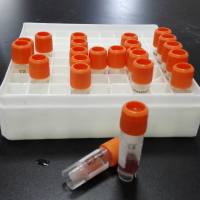The liver oils of certain shark species contains squalene, 2, 6, 20, 15, 19, 23-hexamethyltetracosahexane, at high levels. Squalene is used in the pharmaceutical, rubber, and surfactants industries (1 ). Squalene is easily hydrogenated to give squalane, which is an important raw material in the cosmetic industry where it is used as a skin lubricant and in the pharmaceutical industry where it is used as a carrier for fat-soluble drugs (1 ). The price of shark liver oil for these purposes is determined from the squalene content of the oil, and therefore reliable methods for the determination of squalene are necessary. Supercritical fluid chromatography or SFC (see Chapter 1) is a well-suited method for the analysis of underivatized marine oils (2 ), and determination of the squalene content can be done with a minimum of sample preparation (3 ). A more time-consuming method, determination of iodine value according to the AOAC standard method, can be applied for a rough estimate of the content of squalene in shark liver oils. The iodine value is a measure of unsaturation in the oil and the high degree of unsaturation of the fatty acids in shark liver oil makes it difficult to distinguish between the kind of components that contribute to the iodine value. However, it has been shown that a linear relationship between iodine value and squalene content found by SFC analysis exists (3 ).






